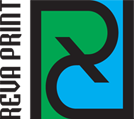Silk-screen Printing
Silk-screen printing is a method of printing where the ink is spread on the printed matter through a fine mesh (silk), which is tightly placed onto a frame. The areas which do not need to absorb the ink are covered with emulsion.
Why choose silk-screen printing?
Silk-screen printing enables to achieve 100% guaranteed Pantone colours and covers the paper better than offset printing. Materials of very different thicknesses, shapes, and structures can be used. The main materials we use include paper and labels. A PVC label, which is printed using silk-screen printing, is resistant to fluctuations in temperature and various weather conditions. In silk-screen printing, the layer of ink is thicker, enabling to achieve good results with uncoated dark paper. Metallic, gold, silver, and other inks can be used. We use the Pantone colour scale inks and, in case of pictures, the cmyk colour separation with the raster density of 60LPI. Of completed films, we accept sheet films (coordinated with us in advance) with positive emulsion up.
The benefits of silk-screen printing include:
- Its good coverage and the possibility to achieve clean full surfaces even in case of materials and surfaces onto which it is very difficult to print (ask our specialists’ opinion if you would like to use special materials). In case of repeated printing, we will store your ink for years and ensure 100% the same shade for each order.
- Resistance to weather conditions, UV-resistance and physical durability of the printed materials, which may last up to 5 years.
We print door labels for security companies, etc., object labels, container labels, control labels for traffic signs, etc., which need to last and remain resistant to physical contact, cleaning, etc. - In 80% of cases, special effects can only be added in case of using silk-screen printing technology.
When printing from file, high-quality work is naturally based on a high-quality file in a PDF format, in which sections of text are also converted to a picture.

